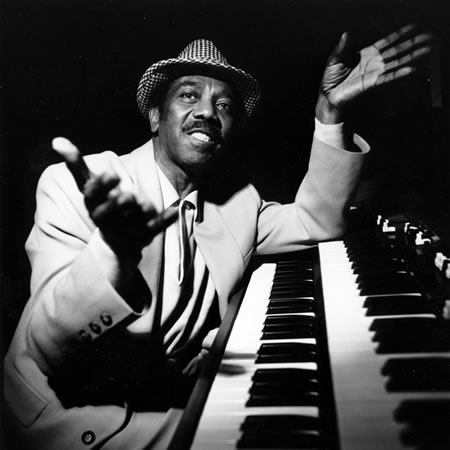Rannie “Photojunkie” Turingan, who in my opinion is the heart and soul of the Greater Toronto Area Bloggers group, will be appearing on tonight’s edition of The Hour with George Stroumboulopoulos on CBC Newsworld at 8pm Eastern Standard Time. The topic: weblogs and his winning the “Best Canadian Weblog” at the 2005 Bloggies. Go, Rannie!
Category: In the News
It’s Funny Because It’s True
Overheard at the coffee shop: “Sean Penn became his Team America puppet at the Oscars!”
Free Mojtaba and Arash Day
I spent the evening at the hospital checking up on Dad (he’s doing well
— he talked wedding plans for nearly the full visit) so I haven’t had
a chance to post the graphic below until now:

Today — all remaining 30 seconds of it — is Free Mojtaba and Arash Day.
Mojtaba Saminejad and Arash Sigarchi are imprisoned in Iran for
blogging — although the charges levelled against them are espionage
and “insulting the country’s leaders”. More details are available at Reuters, the BBC, Iz Reloaded and at the Committee to Protect Bloggers (good cause, so-so name).
Happy 40th, Canadian Flag!

It’s easy to forget that while Canada is one hundred years older than I am (Confederation took place in 1867, I was born in 1967), our flag is less than three years my senior. For forty years, it’s been the symbol of a great place to live, synonymous with hockey, highly regarded by vexillologists (it gets high marks for its clean, clear design) and a protective disguise that young Americans sew on their backpacks while travelling through Europe and Asia.
Happy 40th, Canadian Flag!
Here’s more on the flag:
Chess is Now a Water Sport
[via The Colbinator] Here’s an interesting way to liven up those stuffy chess matches.
You’ve probably heard this already, but let me state for the record: Wanita Renea Young is the worst neighbour on Earth.
Update: The original site to which I linked has a random image that isn’t always work-safe. Here’s its link.
In case you can’t go there, here’s the most important part of the entry:
(Tzedaka is the Jewish legal requirement to do right by your fellow
man… a moral imperitive to charity if you like.) The levels of giving
(from least admirable, to most) are:
- Giving begrudgingly
- Giving less than you should, but giving it cheerfully.
- Giving after being asked
- Giving before being asked
- Giving when you do not know the recipient’s identity, but the recipient knows your identity
- Giving when you know the recipient’s identity, but the recipient does not know your identity
- Giving when neither party knows the other’s identity
- Giving that enables the recipient to become self-reliant
Yesterday, I read an article at Reuters
about two teenage girls baking cookies for the neighbours in some hick
town in Colorado. They stayed home from some party or other and made
sweet things for people, decorated them with little hearts, wrapped
them in ribbon and left a note saying ‘have a great night.’ Then they
ran around, full of neighbourly love, and dropped the boxes off on
porches, knocking on the door and hiding before the recipient of the
gift got to the door. To me, that sounds like the 6th level of giving: giving when you know the recipient’s identity, but the recipient does not know your identity.
…
I hope the bitch neighbour (Wanita Renea Young) that filed the lawsuit
against the two teenagers for this random act of kindness, lies awake
in bed at night wondering whatever happened to the ‘youth of today.’ I
hope it plagues her.
Hear, hear.

Jimmy Smith, master of the “Full Eights” sound on the mighty Hammond B-3!
Around 1985, the Yamaha Organ School was doing its damndest to expunge
my love for music and my sense of rhythm. While Yamaha’s musical
instrument division were practically redefining instruments — consider
the Yamaha grand piano’s bright sound, favoured by Glenn Gould and many
rock pianists, as well as the DX-7 synthesizer and the WX-7, which let
sax and clarinet players play synth — the ghouls behind the home organ
division crafted a course bereft of soul and full of schmaltz. I had a
teacher who had a bit of a legato fetish; she was an advocate of a
playing style in which the notes blurred together into a bland aural
mush. To make matters worse, I was only two out of fourteen songs
through the required Barry Manilow songbook.
After making sure that I got kicked out of organ school at the annual
recital (long story, which I’ll recount later), I became a synth player
full-time. I even went to far as to erase any of the organ sounds from
my Akai AX-60 synth. I’d had enough of that infernal instrument.
What changed my mind was a music course I took at Crazy Go Nuts
University: “Science and Technology for Musicians”. It qualified as an
“arts” course for engineering students and as a “science” course for
the music students. I often gave them a hand with the science parts
(“Uh, Joey, how do I draw a graph of a 5Hz sine wave with an amplitude
of 2?”) and they gave me a hand with non-keyboard instruments (“Uh,
Dave, how do I play a scale on a clarinet?”).
During the course, I wound up writing a paper on the Hammond B-3 organ.
This instrument was clearly the invention of a former watchmaker: a
classic Hammond is essentially a big electric motor driving a gear
system which in turn drives a series of wheels that made sound. While
writing the paper, I decided to hit the music library and listen to
artists who were considered B-3 virtuosos; that’s when I discovered
My bad experiences at the Yamaha Organ School, coupled with a teacher
who was more devoid of funk than the entire Michigan Militia, led me to
forget that one could play the organ with rhythm and even staccato
attacks. On the organ, Jimmy Smith’s hands and feet could be weapons;
his playing style defined what we now considered to be the de facto
organ soloing and pedalling style.
Musicians who redefine the way their
instrument is played tend to draw inspiration from other instruments. For example, Carlos Santana says that in order to perfect his signature guitar playing style, he played Dionne Warwick albums over and over and listened to her voice.
In Smith’s case, he drew inspiration from trumpet players, mimicking
their lines. He even emulated their sound in solos by killing the Leslie
(an organ spaker mounted on a rotating stand that gives organs their
“whirling” sound) and slamming every drawbar save the lowest and
highest to the “zero” setting.
After buying Jimmy’s live album, Root Down (whose name you should recognize — the Beastie Boys covered the title track on Ill Communication),
I reprogrammed the organ sounds back into my synth, and made sure than
any subsequent synth I bought could do a decent B-3 impression. Later,
when the organ made its comeback in rock in the early 1990’s (thanks
largely to the “Madchester” sound of bands like the Charlatans,
Inspiral Carpets, Milltown Brothers, et. al.), I copped more than my
fair share of Jimmy Smith licks at gigs. In 1994, I got to completely “Smith
out” when the band we opened for let me use their B-3 and Leslie. It
was heaven.
My last
synth — a Korg WaveStation A/D,
which I still have — has a patch I programmed: a monster B-3 sound
with a touch of distortion and a decent Leslie effect paired with
spring reverb. When you dial it up, its name appears in capital letters
on the display: JIMMY SMITH.
Jimmy Smith died on Tuesday at the age of 79. He’d been playing the organ for 50 years and would’ve embarked on a tour with Joey “The other keyboardist named Joey” deFrancesco next month.
Thanks, Jimmy, for all the music, and for helping me fall in love with the organ again.